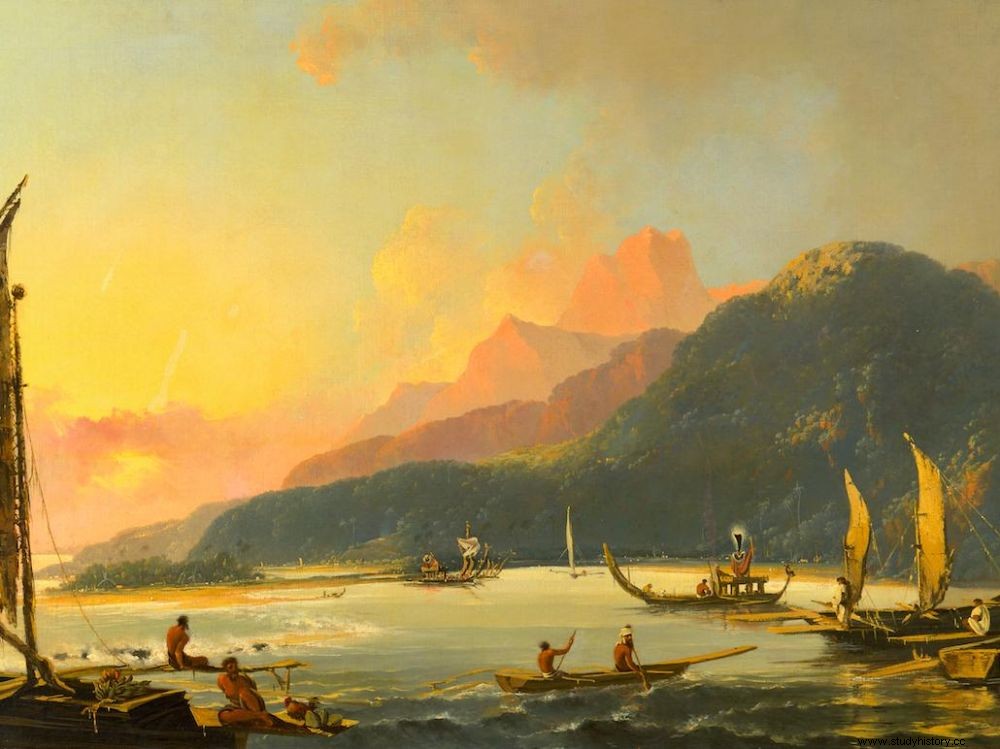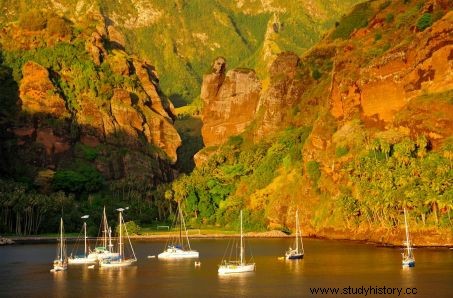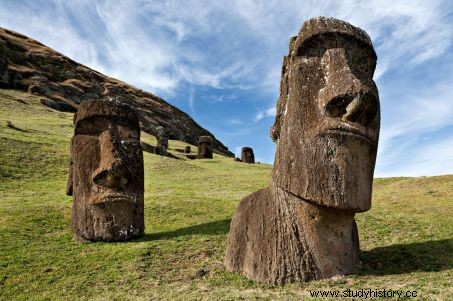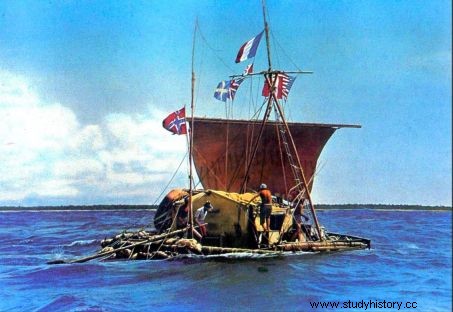Some Polynesians would have Amerindian genetic ancestry, evidence of an ancient contact, which would have occurred around 1200 AD, with inhabitants of South America.

Matavai Bay (Tahiti), canvas by William Hodges (1776). It is thanks to their mastery of the winds and currents, and especially to the invention of the outrigger canoe, that the Polynesian navigators crossed the immensity of the Pacific Ocean, probably until reaching the coasts of the South America.
The Norwegian explorer Thor Heyerdal had the intuition of it. Inca myths evoked the departure of a certain Tupac Yupanqui at the head of a fleet of boats towards the Pacific islands, a journey that the anthropologist-adventurer had successfully reproduced in 1947 during his famous expedition aboard the Kon-Tiki , a balsa boat. Genetics has just confirmed for the first time these early relationships between Native American populations and inhabitants of Polynesia!
Analysis of the genome of 807 people
A study published in the journal Nature July 8, 2020 revealed that at the turn of 12 e and 13 th century, probably between 1150 and 1240, ships coming from the coast of present-day Colombia would have reached islands in the Pacific, thousands of kilometers away. Once there, these populations would have mixed with the Pacific Islanders, thus bequeathing a small part of their genetic heritage. And it is the genetic traces of this Amerindian ancestry that have been found in the genome of current inhabitants of the Mangareva and Pallisers islands, in the Tuamotu archipelago, as well as in Fatu Hiva and Nuku Hiva, in the Marquesas islands (French Polynesia ). To obtain these results, Alexander Ioannidis, of Stanford University in California (USA) and the co-signers of the study, analyzed the genomes of 807 people from 17 Pacific Island populations and 15 Native American groups living the along the Pacific coast.

Hanafave Bay, on the island of Fatu Hiva, in the Marquesas (French Polynesia). Credits:Antoine Lorgnier / OnlyworldNet/Only France/AFP
Archaeologists and anthropologists have wondered for decades about the potential link that may have existed between the inhabitants of Oceania and South America. Sweet potato (Ipomoea batatas ) had hitherto been considered one of the most tangible proofs of contact. This emblematic tuber of tropical America, where it has been cultivated for 10,000 years, is referred to by fairly similar terms both in Polynesian languages such as Maori (kuumala ) than in the Andean Quechua dialects (kumara) . “After that meeting at 13 e century, mixed populations joined other islands, including Rapa Nui, Easter Island, during a migration located around 1380” , can we read in the study.

Moais carved in the tuff of the volcanic crater of Rano Raraku, on Easter Island. Rapa Nui was colonized by Polynesians probably from the Marquesas Islands. Credits:Images Source/AFP
“Eastern Polynesians were great navigators at the time"
Easter Island would not have been the first meeting point between Polynesian and South American navigators, as researchers had long estimated. This contact would rather have taken place in Fatu-Hiva, in the Marquesas, around 1150. And it was precisely a similar crossing that the Norwegian naturalist Thor Heyerdahl had made. Leaving from the port of Callao, in Peru, he had reached – not without difficulty – the Marquesan atoll of Raroia 101 days later.

Thor Heyerdahl and his crew, on their balsa raft, during the “Kon Tiki” epic, in 1947. Credits:Stringer/Scanpix Norway/AFP
Interestingly, the DNA of an indigenous group from present-day Colombia (Zenu) would closely match that found among the Polynesians. The study left open the question of which way the crossing of the vast Pacific was made:using their outrigger canoes, did Polynesian navigators head east and reached Colombia before leaving in the company of Native Americans? Or did South Americans travel westward to reach these Pacific islands as the South Equatorial Current permits? “The Eastern Polynesians were great navigators at the time, and they arguably had a superior mastery of seafaring and deep-sea canoe building than the coastal Colombian peoples of the time. They had no reason in their search for new lands to stop their search once the Polynesian islands were discovered and they were the ones who, for me, reached the American shores ”, specifies the archaeologist specializing in the Oceanian world Jean-Christophe Galipaud (IRD, National Museum of Natural History in Paris), joined by Sciences et Avenir . Referring to the study results, Lars Fehren-Schmitz, a geneticist at the University of California, Santa Cruz (USA), told the New York Times that this new study “was the most compelling evidence I have seen so far”.
